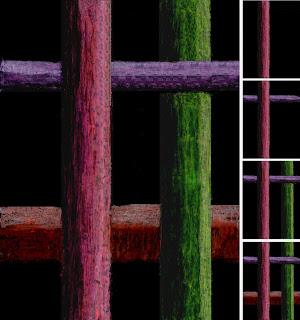 I used to introduce 3rd and 4th graders to shading and tinting techniques with circles and spheres, but found this week that straight lines worked much better. The students can just concentrate on adding color to lines, instead of dealing with tricky curves.
I used to introduce 3rd and 4th graders to shading and tinting techniques with circles and spheres, but found this week that straight lines worked much better. The students can just concentrate on adding color to lines, instead of dealing with tricky curves.1. Students were to first draw two parallel lines on their paper, either horizontally or vertically – no diagonals to keep this simple. When complete, they colored in this “pipe” a single main color, whatever they preferred.
2. When the “pipe” was filled with color, the students used a white pastel and add it on top of one side, and black pastel on the other. It was important that they go back and mix the main pastel color on top so that everything blended together and the colors didn’t look too striped. Soft gradations of color are the goal.
3. This step was repeated at least three times so that the students ended up with a picture that had one “pipe” in front, one in the middle, and one in the background. This project is packed with learning objectives (tinting and shading and layering).
CA Visual Arts Standard: Grade Four
2.1 Use shading (value) to transform a two-dimensional shape into what appears to be a three-dimensional form (e.g., circle to sphere).
